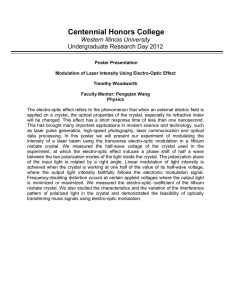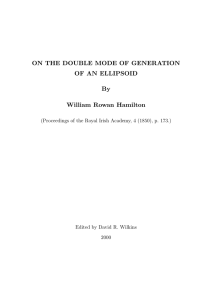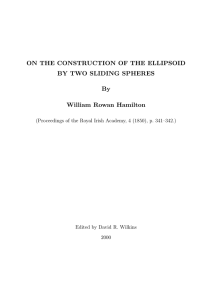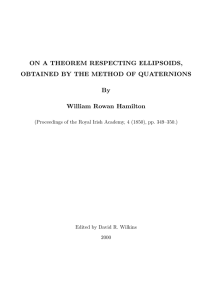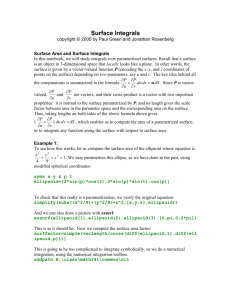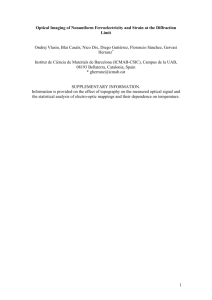Non-linear Optics
advertisement
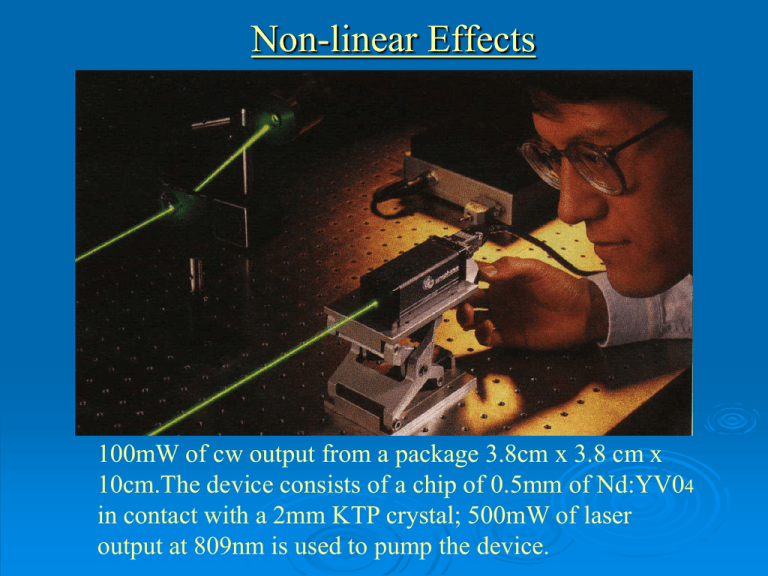
Non-linear Effects 100mW of cw output from a package 3.8cm x 3.8 cm x 10cm.The device consists of a chip of 0.5mm of Nd:YV04 in contact with a 2mm KTP crystal; 500mW of laser output at 809nm is used to pump the device. And inside the box… Doubling and doubling again! Non-linear Optics The polarisation, P, can be described in terms of the susceptibility tensor, χ. We can include any nonlinear response of the medium as shown below. Note that in general the electric field and the polarisation need NOT be collinear. Non-linear Effects: (Classification by order) Anisotropic binding of an electron in a crystal The springs have different stiffness for different directions of the electron’s displacement from its equilibrium position within the lattice. The polarisation, and therefore the refractive index, will be different in different directions Index ellipsoid and the principal axes Uniaxial or Biaxial? (a)Biaxial crystal – two optical axes. (b) Positive uniaxial crystal – one optical axis ne ≥ no (c) Negative uniaxial crystal – one optical axis ne ≤ no The Permittivity Tensor The Index Ellipsoid 3D ellipsoid surface is given by: The Electro-optic Ellipsoid Taylor expand the refractive index in the electric field Or in terms of r, So, With the identities, Linear Electro-optic Tensor The r-coefficients are related to the crystal symmetry The 27-elements reduce to 18 because of invariance w.r.t. i,j interchange Electro-optic tensor Electro-optic effect Distortion of index ellipsoid caused by The application of an electric field Case of ADP and isomorphs With a field applied in the z-direction the ellipsoid is distorted in the xy-plane Rotation by 45° about the z-axis transforms to the (x´, y´, z´) co-ordinate system Rotation of Axes If we take θ=45 degrees The ellipsoid referred to rotated axes The transformed axes So, given, we can write, i.e., Variable phase-plate With light polarised along the original x-direction For a half-wave plate: Giving a half-wave Voltage: (Note: the field & propagation directions are the same here!) Amplitude modulation Electric field & Displacement Vector k H D k E 0H The wave-vector surface The intercept of the k-surface with each plane xy, xz & yz Consists of one circle and one ellipse. The surface is double suggesting there are two possible values for k for any direction of the vector k. There are two phase velocities corresponding to two orthogonal polarisations. At the point P the two values are equal; this is the optical axis. Poynting’s vector- S & Wave vector- k Summary Linear optics: Non-linear optics: Linear electro-optic: (Uniaxial crystal becomes biaxial when the field is applied)
